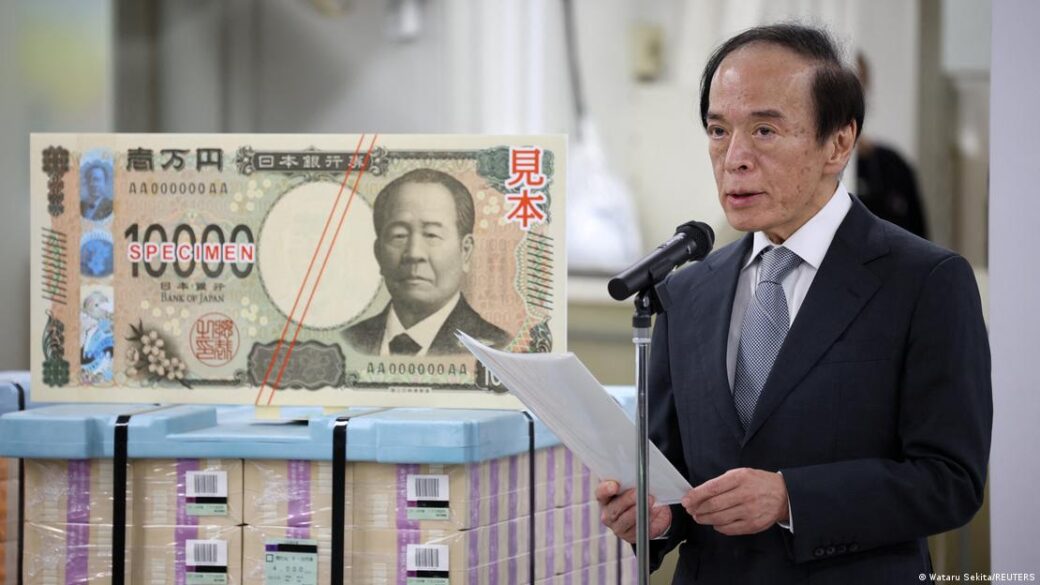Japan issued its first new banknotes in two decades on Wednesday. The new cash is fitted with 3-D hologram technology to curb counterfeits.
The bills use printed patterns to generate holograms of the portraits facing different directions, depending on the angle of view. Japan’s National Printing Bureau, which is responsible for printing yen, claimed it is the world’s first for paper money.

Prime Minister Fumio Kishida praised the “historic” state-of-the-art features of the new 10,000 yen, 5,000 yen and 1,000 yen notes.
“I hope the people will like the new bills, and they will help energize the Japanese economy,” he told reporters at the Bank of Japan after the unveiling ceremony.
Local media confirmed that following the launch of the new currency, the older bills will remain valid.
Japan is still a cash-heavy economy where cashless payments have been slower to catch traction.
“Although the world is moving toward cashless interactions, we believe cash remains important as a way for safely settling payments anywhere and anytime,” said Bank of Japan Governor Kazuo Ueda.
About the new Japanese banknotes
Kishida noted that the people featured on the new currency celebrate capitalism, equality for women and scientific innovation.
The 10,000 yen bill, worth about €57.5 or $62, has the face of Eiichi Shibusawa who is known as “the father of Japanese capitalism.”
Shibusawa is a key figure in building Japan’s modern economy and is credited with founding hundreds of companies.
The 5,000 yen bill, worth about €28 or $30, features Umeko Tsuda who was a pioneer feminist and educator.
The 1,000 yen note, worth about €5.75 or $6.20, portrays physician and bacteriologist Shibasaburo Kitasato. He was instrumental in the research of tetanus and the bubonic plague.
The backs of each of the bills feature Tokyo Station, wisteria flowers and ukiyo-e artist Katsushika Hokusai’s Mount Fuji.
The banknotes also feature larger print, making them easier for the nation’s aging population to read.



